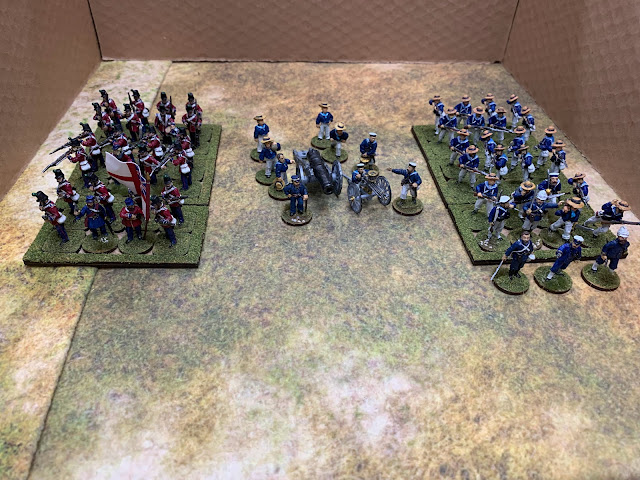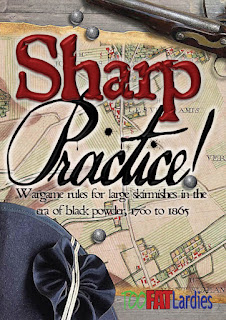The Anglo-Indian Intervention Force in Japan, Part Two (Naval Troops)
Following my last post, which covered the Indian infantry on this project, I've now rounded out the naval forces. These make up one of the smaller portions of the overall force, consisting of one unit of Royal Marines, a unit of Naval Brigade, and a gun crew. The plan originally was to do only a small handful of sailors, but earlier this year I decided to do a participation game at the Overlord show in Abingdon based on the 1864 Shimonoseki Expedition.
 |
| A photograph by Felice Beato showing one of the British naval brigades – and a few stray Marines in the foreground? – in possession of a Japanese coastal battery at Shimonoseki in 1864. |
To do that, I decided I would need two units of Marines, two of British sailors, and one of French. When I started the process, however, I somehow completely failed to do any research into the kit worn at the time, which is why my Naval Brigade are all wearing sennet hats rather than white caps. Similarly, for the Marines I went with troops with shakoes on the basis that those were what I saw in contemporary illustrations, but in retrospect it's become clear that they would have been wearing Kilmarnock forage caps. Oh well, at least it makes them look different!
But truth be told, errors of research were a bit of a running theme with these, and I won't call them my proudest effort as such from the standpoint of historical verisimilitude.
Royal Marine Light Infantry
I forget where I came across the apparent use of the White Ensign on land, but it would postdate the 1864 period that I had originally painted these figures for. The uniform is sort of off, too, as the shako is the taller 'Albert' withdrawn in 1855 rather than the 'French-style' one I was trying to mimic. Still, you likely wouldn't be able to tell at a distance. Moreover, they are possibly the only troops wearing the correct tunic for 1868, that being the 1863 tunic with the pointed cuffs and loopy bits, rather than the 1856 tunic with rectangular elements that most of my infantry figures have (and which I mimicked for the Indian regiments).
In total, there are 18 men and 6 command figures, which means two Groups plus command and support for Sharp Practice, or two full units for The Men Who Would be Kings.
The figures are from Perry's BIF range, being their Canadian militia with the aforesaid mixed kit.
Naval Brigade
As previously noted, the sennet hats were an unfortunate error. One of the officers here also is wearing an 1877 Foreign Service Helmet, which again, oopsie. But what makes these fun, besides just being a different colour, is the presence of cutlass bayonets, which I think look appropriately vicious. As with the Marines, there's enough for either two Sharp Practice Groups, or two TMWWBK units.
Figures are primarily Perry, drawn from their Victoria's Little Wars range for the men, and both the VLW and Sudan ranges for the officers. There's also one chap in late 1850s garb from Foundry's Mutiny range.
Naval Gun Crew
There are two crews here, one from Foundry's Mutiny range who are operating the 32-pounder naval gun, and then some figures for a Perry Sudan Gatling gun. I got the Gatling – despite being an anachronistic model – for the forces of Nagaoka, who did have two of them, but I've since bought a more period-accurate model that I'll do up eventually, probably.
The Full Lineup
What next?
- Indian Infantry (complete)
- Naval Forces (complete)
- Artillery (mostly complete)
- British Infantry (1 of 5 battalions complete)
- Cavalry (not started yet)
- Support Figures (a few done)
And Incidentally...
Overlord made it into the local papers – with my game in the header image!










Comments
Post a Comment